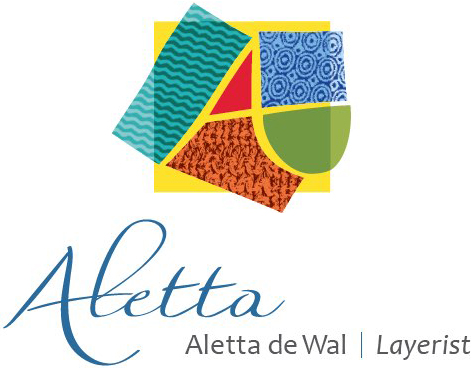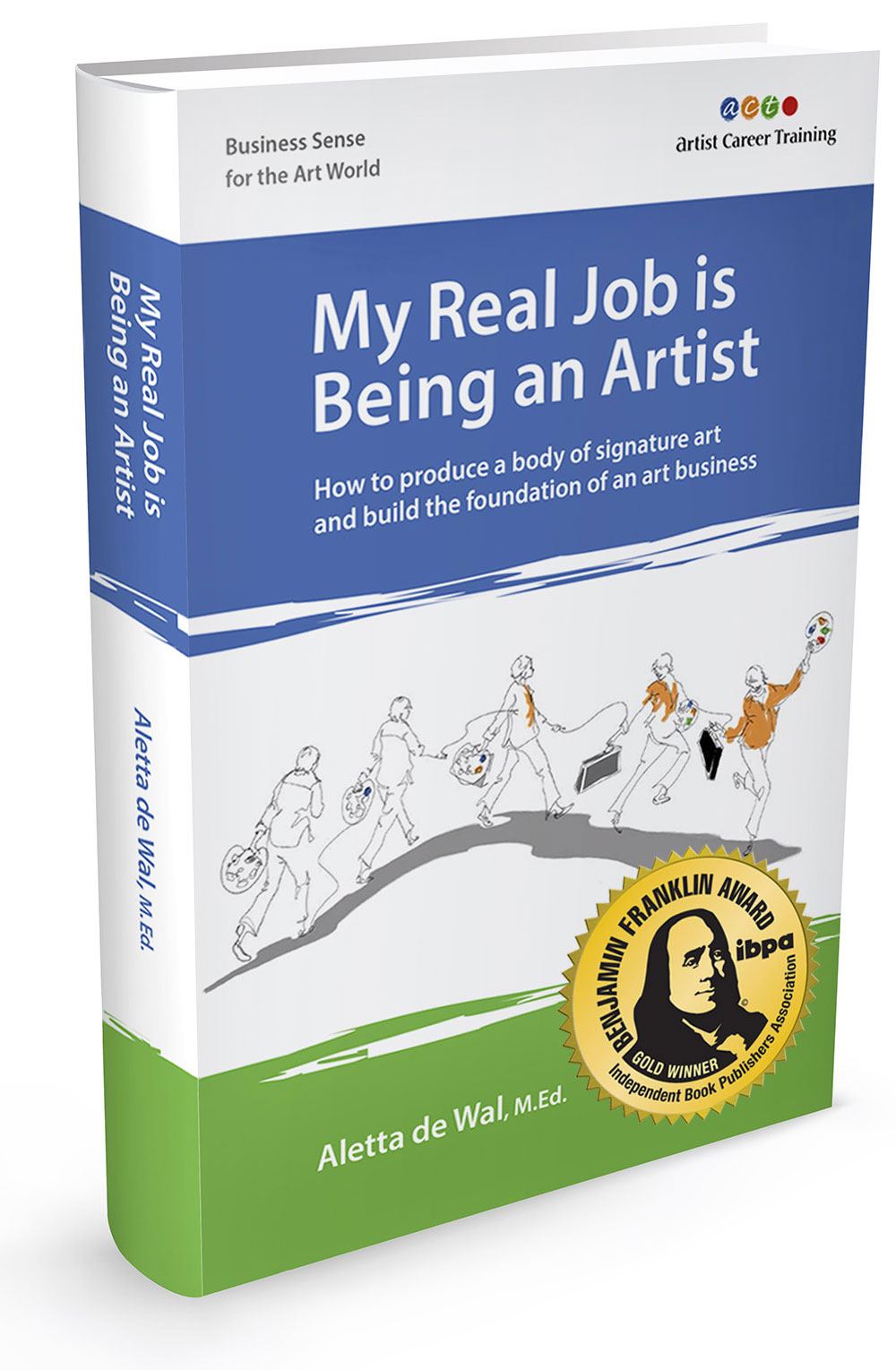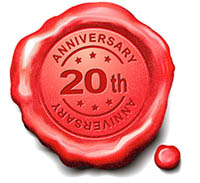There is often additional information on the recording that is not in this written interview. Inspire yourself and listen while you make art.
My primary goal in these interviews is to inspire you with stories of people who make a living making art and who consider it a "real job." The artists I interview here have valuable tales to tell you about how to make a living from making art and still have a life.
Artist Joshua Coffy Creates the Gift Prolific
Random acts of kindness to combat depression and create community
 Josh in the Gift Prolific Gallery at Burning Man 2012 - Photo by Lady Bee
Josh in the Gift Prolific Gallery at Burning Man 2012 - Photo by Lady Bee
www.undersong.com
www.thegiftprolific.com
www.facebook.com/ArtofJoshuaCoffy
www.facebook.com/theGiftProlific
www.instagram.com/giftprolific
Joshua Coffy is a self-taught artist, living and working in San Francisco, who draws inspiration for his mixed media paintings from the natural world, scientific illustrations, and other graphic arts.
"Growing up on a farm in Ohio definitely shaped the way I see the world...and moving all over the country as a teenager added to my respect for nature." says Josh.
With a passion for animals and a playful sense of whimsy, Josh gives a new voice to the creatures he paints. "The animal world is like looking at the negative space in between our day to day lives, that I rather like exploring as a mirror for our own actions and being." Joshua shows his work in several galleries in San Francisco and the Bay Area.
Joshua is also the creator of The Gift Prolific, an evolving gifting and painting project he began in 2011 that deals with random acts of kindness to combat his depression and create community.
A.C.T.: What prompted you to start your professional art career?
I wanted to chase my passion for art. That was the simple part. Once I decided to do that, the part where I have to pay my bills came in. So I started treating my art production much more like a business.
I try to think of it this way ... I need to make money at doing what I love so that I can continue to keep doing what I love. Selling my paintings helps me buy more time, supplies, and resources to keep making art so it becomes self-sustaining. That helps me feed my family, keep the lights on, and nourish my life. I think once I got comfortable with that, things got a whole lot easier - and a lot less scary.
So being professional is really about finding different ways to make my art sustain itself and my life.
A.C.T.: What is your artistic direction? What is your "life's work" as an artist?
I paint a lot of animals. I see them as a mirror for humans and how we act in the world. I am interested in juxtaposing animals into different, sometimes whimsical, situations. I work to create statements about the environment, the world, and the human condition with my paintings. I want to get people to think about really looking at and hearing animals as they are in nature. But I work very hard to not be heavy handed and gloomy. I like getting out my message with humor and bright colors.
 Hands Off My Doughnut © Joshua CoffyI work exclusively with acrylic paints and mixed media. I like to use a lot of old paper in my paintings in the work mostly as a ground to work on. Sometimes the background has a lot to say.
Hands Off My Doughnut © Joshua CoffyI work exclusively with acrylic paints and mixed media. I like to use a lot of old paper in my paintings in the work mostly as a ground to work on. Sometimes the background has a lot to say.
 The Life and Death of Penguins © Joshua CoffyArt is for everyone. I believe that when you make a piece of art everyone has the chance to connect with it. I want people to know that my art is a gift to the world. A tribute to how amazing this planet is.... and how amazing we CAN be if we just look for our own beauty once in a while.
The Life and Death of Penguins © Joshua CoffyArt is for everyone. I believe that when you make a piece of art everyone has the chance to connect with it. I want people to know that my art is a gift to the world. A tribute to how amazing this planet is.... and how amazing we CAN be if we just look for our own beauty once in a while.
 Where They Begin © Joshua CoffyA.C.T.: What is your art business model and art business direction?
Where They Begin © Joshua CoffyA.C.T.: What is your art business model and art business direction?
My business model consists of a few different strategies:
- I exhibit paintings in traditional galleries and shows. This is great when sales happen, but it is not entirely dependable. For instance you can line up shows, and participate in many exhibitions, but you never know for sure how well you are going to do.
I have a big show coming up on April 18th at the Lower Branch Gallery where I am splitting the gallery with the talented Welch Brothers.
- I have also been working on other income streams that can be a little more definable:
- Commission work has been the real heart and soul of my business so far;
- I do pet portraits;
- I sell prints of my works regularly;
- Every year I make a calendar of my artwork - always very successful and usually helps me to raise the money for art supplies for the next year;
- From time to time I also do a live painting gig where I paint on stage with a band. That is a lot of fun.
 Live Painting 2012 - Photo by Noel Holmes
Live Painting 2012 - Photo by Noel Holmes
- My big goal for this year is to plan and execute a solo show somewhere in town.
- I have also started to participate in shows outside of San Francisco. I would like to keep pushing that as well.
A.C.T.: I first heard about your project "The Gift Prolific" from the San Francisco artist group ArtSpan. Tell us how you got started, how the project worked, what happened as a result of the give-aways and how that led to sales.
I was fighting through an incredible depression. I was really struggling. I was a new dad. I had financial pressures. My wife was unemployed. At one point I was dealing with suicidal feelings and thoughts. I was lost. I was in a funk and just not doing well.
During this time, I noticed that one of the only things that made me feel like I could fight back was doing things for others. Giving to others took me outside of my own struggle for a bit, and I felt more in charge of the depression. Even doing a small random act for five minutes made me feel more normal, and so I started looking at gifting as a way out.
I had been to the Burning Man event several times. Once a year, tens of thousands of participants gather in Nevada's Black Rock Desert to create Black Rock City, dedicated to community, art, self-expression, and self-reliance. They depart one week later, having left no trace whatsoever.
One of the principles of the Burning Man gathering is gifting. Giving to others with no strings attached. That really resonated with me at the time.
So, as a way to bring Burning Man's ethos into my daily life I started giving gifts to people, every day. I really liked the way it made me feel. Then I came up with an idea to help me involve my artistic expression. I created the Gift Prolific. It started on "Burn Night" of Burning Man 2011, which I consider my New Year's Day.
Each day I gave a gift to someone or do something nice for someone. Then I would go home and make a small painting that represented that day's gift. I also posted a blog about each painting and the gift experience that inspired it.
At the end of the year, I took all of the paintings to Burning Man 2012 and showed them in a large gallery that I built on the playa. At the end of that week I gave each painting away as gifts themselves. People that got a painting could research each painting's story on my blog.
 The Gift Prolific Gallery at Burning Man 2012 (Steven Raspa, Theresa Summer, Joshua Coffy, Darwin, and Lady Bee) - Photo by Karen Kuehn
The Gift Prolific Gallery at Burning Man 2012 (Steven Raspa, Theresa Summer, Joshua Coffy, Darwin, and Lady Bee) - Photo by Karen Kuehn
This project was a huge success. I gifted a lot, and I painted more than I ever have in my life. At the final gallery opening at Burning Man I had about 333 paintings. Over 300 people waited in line for over three hours in the hot desert sun to get a painting.
Many people told me about their struggles with depression and suicide. Several people told me that my project had inspired them to go home and start their own big creative projects.
It still stands as one of the greatest days of my life and is easily one of the best things I have ever done. This project has really given me the power to face down my depression and other demons.
Many of the paintings have traveled all over the world. People sent me emails to tell me that they either gifted their painting to someone else or sent a photo to show where they hung it in their homes. I still get emails from places like Brazil, Germany, New Zealand, Japan, Australia, and Tel Aviv!
I also have had several emails requesting paid commissions from this project. I never intended it, but it was one of the coolest marketing campaigns for my art.
The Gift Prolific has evolved. I still do the daily gifting, but I paint weekly. Now I do what I call the February Marathon when I paint a piece of work daily that is based on that day's gift. I post it on my blog for sale. This evolution is an experiment in creating affordable art and raising money to buy my art supplies for a year.
A.C.T.: What peak moments have you had as an artist?
The Gift Prolific obviously has been huge for me. My wife and child have been involved and super supportive. One of the unexpected outcomes was free tickets to Burning Man, so I took my then three-year-old son. When he found out the first thing out of his mouth was "We better get busy and make paintings." So we made about fourteen paintings together and gave those away to random people at the playa.
Last year Cristina Ibarra at ArtSpan called me to ask if I had any ideas about engaging people to make art at a street fair. I created a really interesting mural project where 144 people each painted a small piece of one of my paintings and we reassembled it as a large mural. I think the final painting was better than the original. That was quite amazing and is the model for my next big Burning Man Project.
People who participated thought it was cool to be able to paint without paying to do so. Some said "I can't draw" so they did a mono-color square.
We thought people would come back at the end of the day to pick up their dry piece, but no one did. That gave us a complete painting that we displayed in a local bar. So not only did members of the public have a chance to be an artist, they also were exhibiting artists!
 Joshua Coffy and ArtSpan Mural Project 2012 - Photo by Cristina IbarraI am honored to have been asked to make a few art pieces for the new Burning Man Head Quarters here in San Francisco, one of which is this year's Gift Prolific piece.
Joshua Coffy and ArtSpan Mural Project 2012 - Photo by Cristina IbarraI am honored to have been asked to make a few art pieces for the new Burning Man Head Quarters here in San Francisco, one of which is this year's Gift Prolific piece.
I should also say that all of these moments could not have happened without the support of my loving wife Theresa. She has supported my art and career dreams from day one. And she has been a huge help to making this all happen.
A.C.T.: How do you define success and how do you celebrate it?
I get to do what I have always wanted to do...make a living making art! That opportunity is pretty great! I am looking forward to making that a sustainable way of living, over time and showing my son that you can do what you dream about - and that you have to do the work to get there.
I take time to appreciate what I accomplish and really take in what I achieved. I feel more connected to my victories that way instead of just going straight on to the next thing.
I have a small ritual of doing something nice for myself when I sell a painting or have a milestone in my career. This can be anything like going for a hike or buying myself a milkshake to take some time and appreciate my work. It is kind of a "Thank You" to myself for chasing my dream.
A.C.T.: What obstacles have you encountered in your art business and studio and how have you handled them?
The biggest thing that I have had to deal with is "burn out." I recently took on way more work than I really should have. And in the process of meeting most of those deadlines I got super burnt out on art making.
So I am learning the value of taking small breaks to recharge the batteries a little bit. I go to art shows I'm not a part of, see friends, and go to music concerts to remember why I do this. When I came back it was like autopilot kicked in, and I was back at the same level of production.
Business wise I had a few of my commission clients not pay on time...and that was tricky to navigate as I was paying rent with their checks. So I learned to take on more work to cover when people pay late. I also learned that I couldn't depend on one client payment to pay my major bills.
You have to decide what's in your control and what is not.
A.C.T.: What opportunities has a professional approach to your career brought you that you might otherwise not have had?
Once I started to treat my art career like a business and less like a hobby,
- I got into bigger galleries because I was able to talk more passionately about my art with dealers and other artists who referred me;
- I started to take on bigger and better commissions, like large murals for Trader Joe's and private clients;
- I started to get accepted into more galleries for group shows;
- I raised my prices once I felt I deserved more;
- I just thought I was making friends and started to build a huge network of people and fans of my work who tell others about me;
- I have gotten to volunteer with ArtSpan and Burning Man and share my art with many people while I did so.
Art is what I do and I represent it to my best ability.
A.C.T.: Who are your role models and mentors? What was the best advice they gave you?
David Best is one of my role models. He is an amazing sculptor committed to public art and who builds incredibly large scale Temples, a little different than the party themes, at Burning Man and in other places. David's Temples are sacred spaces that give people a chance to release whatever they need to release. Then the temples are burned to the ground at the end of the week.
I asked him what to do now that my first big gifting project was done. David told me once to "make a s#@t load of bad art in between your important projects." That has stuck with me. I think I often over think everything I work on...and sometimes get stuck on it. I have a picture of him above my computer with that advice that reminds me every day not to take things too seriously and that I have time to make more art. Move on and never stop creating. Eventually I will find the next big thing I really want to do.
One of my favorite art professors, Jim Torlakson at City Art College told me "You know what kind of art you want to make so maybe you should take a few business classes." I did and that advice has helped me with my inventory, marketing, getting my work out to people. So read books, magazines, and this blog ....
Another is blogger Chis McCombs who told me "If you want to make more money, add more value to the world." That has been invaluable to me in terms of making art for a living. It reminds me to make the art that I believe in most, and others will connect with it and value it like I do...and many times they are willing to pay for it.
A.C.T.: What is your art marketing strategy? How do you incorporate social networks?
I believe that the real trick of selling my art is getting enough people to see it. I have used Facebook and Instagram a lot and up until recently that has been great.
A few years ago, anything I put up on Facebook had a good chance of selling. In the last couple of years, Facebook has declined in popularity recently and their "algorithm" of my posts only reaching about 15% of my friends list is really unfortunate. I have tried to "boost" my posts by paying, but that has yet to translate to any sales. This essentially makes my Facebook art page a lot more like my webpages. A nice place to display my art, but I have to work very hard to direct traffic to them.
I prefer Instagram for sharing the new stuff I am working on. It's much more of a visual network. You basically post photos and can include one or two sentences. It's quick. Easy. And pretty fun. I have a good amount of followers for my posts and get a lot of feedback there. It really helps me determine what people are interested in and often brings people to my shows.
I know artists who post on Facebook and then get really upset if it doesn't sell. I guess my general rule of thumb when looking at social networks is you still have to put in quite a bit of work. There is no magic site that is going to sell art for you. Do the work. Drive people to the sites. Get people interested and maybe you'll sell.
A.C.T. What promotional materials and actions do you use most often?
You are your best promotional tool when you can represent yourself well and share your story. People don't forget that. Sometimes it doesn't even have to be about art. They just want to know who you are.
I am always looking for ways to market my art without the computer by getting out there. Posters, post cards, business cards, and just generally talking about my art seem to garner the best results.
Keep in mind that everything you give to people can be used to promote your art:
- I have a lot of business cards and I carry them with me everywhere I go. I give them to as many people as I can. I am often surprised when I go to shows and artists don't even have business cards. Even if you hand write something, it's better than having nothing. Giving them out to everybody is a super tool. I was at a rock concert not too long ago, and as we were talking, I gave them my card and said to call me if they wanted to go see a show or get together sometime. That night, they called me to commission a painting because they'd gone to my web site. So, you never know who's going to be interested in buying your art.
- I talk about my art a lot. I do this mostly because it really is what I am most passionate about. So it just comes natural for me.
- I really like a good postcard for shows. Sometimes the gallery doesn't make a postcard for their show, so I make my own. It is usually inexpensive and effective, a great way to get in touch with my mailing list and remind them about my show.
A.C.T. How do you manage your mailing list?
You really have to manage your mailing list or you will miss out on so much opportunity. I have had to revamp my mailing list process. I have collected lots of addresses over the years. I now keep them all in an Excel Spreadsheet. Some of my friends helped me to do the data entry that I really don't like to do.
On my "business days" I work hard to update my mailing list. This is my audience. These are people that have expressed an interest in what I do.
This year I sent out a "Thank You" card to each person that bought some art from me. That really helped me build a collector relation with them. Instead of saying thanks for buying my art, please buy more, I told them I appreciated their purchase and that was helping me to take the leap to go full time. A lot of people called and thanked me and said I didn't have to do that. You can have the best art in the world, but if you are a jerk, you won't sell.
This is a priority for my business. In the future I am possibly going to make special deals to my mailing list folks, and I am also planning to do some print giveaways to really keep it interesting.
A.C.T. How do you use your art to support causes you believe in?
I come from a background of charity fundraising. I've always thought that if I could do something I liked to do and that would help someone, I should do so.
At the beginning of each year I set aside a number of paintings, some done that I can let go of, or that I will create or gift to various charities for that year for auctions to raise money for their cause.
 Josh with his piece Contemplation at the Coalition For Homelessness Art Auction 2012Last year I donated a large piece to the Coalition On Homelessness for their annual fundraising auction. It was a lot of fun and a huge help to them. I got to go to the live auction and meet a lot of people and give out a ton of business cards. I raised some money for the cause, met a lot of people including some artists to paint with this year. As a result, two people that I met that night contacted me about doing commissions for them.
Josh with his piece Contemplation at the Coalition For Homelessness Art Auction 2012Last year I donated a large piece to the Coalition On Homelessness for their annual fundraising auction. It was a lot of fun and a huge help to them. I got to go to the live auction and meet a lot of people and give out a ton of business cards. I raised some money for the cause, met a lot of people including some artists to paint with this year. As a result, two people that I met that night contacted me about doing commissions for them.
I encourage all artists to find and be a part of events like this. You never know whom you will meet or how it turns out. But if you represent yourself well, the results can be really amazing. And in the end you get to help some really cool causes. The trick is not giving too much of your stuff away. Once people heard that I give to charities, I started getting several requests every month, so I have to limit my charity work.
A.C.T. How do you price your work?
This is one of the most challenging things. I try to keep in mind the concept of being fair to myself. Many times artists will undervalue their work to try and ensure that it sells. The problem with that is in the end you feel like you got ripped off a little. And inexpensive art doesn't always sell.
I used to try and charge an hourly rate for my paintings, but I found that to be a little inconsistent. You can paint basically the same painting twice, and I would bet that one of them would take you longer. That would make your pricing (by the hourly model) very inconsistent and unfair.
Lately I have been experimenting with prices based on the size of my paintings. That has really helped me to keep my pricing consistent, and it makes it easier for me to write up price lists. I don't have to reinvent the wheel for each painting. This also keeps me away from overpricing the ones I think are the greatest paintings or undervaluing the ones I don't like as much.
You never know which ones people will think are your better pieces, so it's best to be consistent.
More and more I find the real factor that determines sales if the buyer really connects with the piece.
A.C.T.: Please describe how you manage your time, money and energy.
I am still working out my daily schedule, but it's something like this:
- I grew up on a small farm in Ohio, so I tend to wake up early, sometime around 5:30 a.m. I wander into my studio, which is a small room in my garage.
- I read the news, emails, and my to do lists.
- I average three painting days a week and two business days. Of course they can be interchangeable depending on deadlines and work.
- On "painting days" I have the chance to paint from 6:00 a.m. to noon, when my four-year-old son gets out of preschool. After I pick him up and hang out for a bit, I have more painting time in the afternoon and evenings when my wife takes over.
- On "business days" I schedule art drop-offs and pickups, meet with gallery owners or potential commission clients, work on my websites, research galleries and venues, look at inventory, cash flow and accounting and plan out the weeks and months ahead.
- I try not to do much painting on days when I have a show - which I consider work. Once I am there, I am talking to people, participating and selling who I am.
As far as monthly plans go, I work hard to have at least one gallery show a month. Group shows and small exhibitions really help fill in the gaps. This year I am looking at planning shows a few months to a year ahead of time so my planning has change a little.
 Josh Painting in His Studio in 2011 - Photo by Theresa Summer A.C.T.: What changes have you experienced in the art market and how have you navigated them? What lessons have you learned?
Josh Painting in His Studio in 2011 - Photo by Theresa Summer A.C.T.: What changes have you experienced in the art market and how have you navigated them? What lessons have you learned?
During the recession there was less art sold and fewer new collectors. I weathered that by going to shows, seeing what was out there and made work that was not necessarily fine art to see if that would sell. I'm an avid ukulele player, so I got into a few bands to pay some bills.
I have been slowly building my network and my career here in San Francisco for about eight years. For much of that time, my art business was more of a hobby. The biggest change for me has been the last three months where I have taken things up a notch to make this my full time job.
And the biggest lesson that I am learning is time and project management. I can't say yes to everything! I have to go 100% on the projects I have and see where that takes me.
A.C.T.: What advice would you pass on to artists who want to succeed in any economy?
Do the work. I hear a lot of artists talk about struggling to sell art. And the market does change based on the economy. If you are doing the work of being a professional artist, then you will widen your chances of success.
The trick is to be flexible and roll with what is working. Realize what you are not going to do as well. Be ready when things pick up again - have your inventory, posters and promotion ready, so you can get as many shows as possible.
You may have to be flexible and take on some things that you maybe wouldn't normally take on:
- Take on some (pet) portraits;
- Sell some paintings to family members;
- Look for grants;
- Create a product, like a calendar of your art to sell;
- Illustrate a book.
There are hundreds of things that you can do with your art, once you open up to the possibilities. Being that flexible will save you when the economy is going through a rough patch.
A.C.T.: How do you feel artists can benefit from the types of programs, services and products we offer at Artist Career Training?
It is super nice to have another set of eyes look at your business and give you some ideas. I also believe that if you are not learning new ways to be an artist in the world, you get a little stale...Learn some new stuff....be flexible and thrive.











